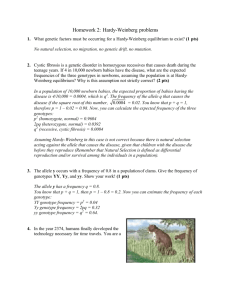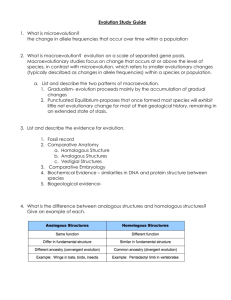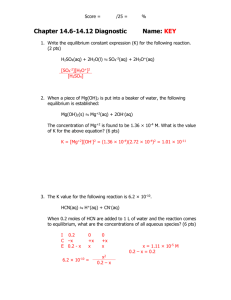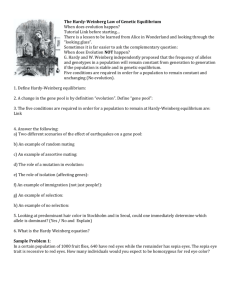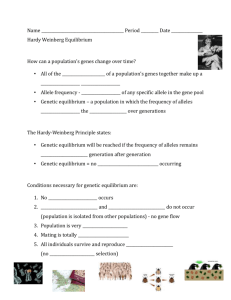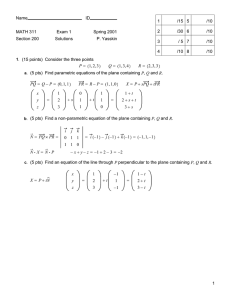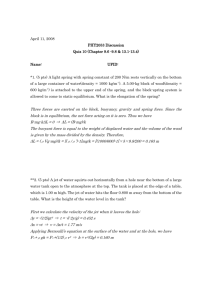Problems - biology4friends
advertisement
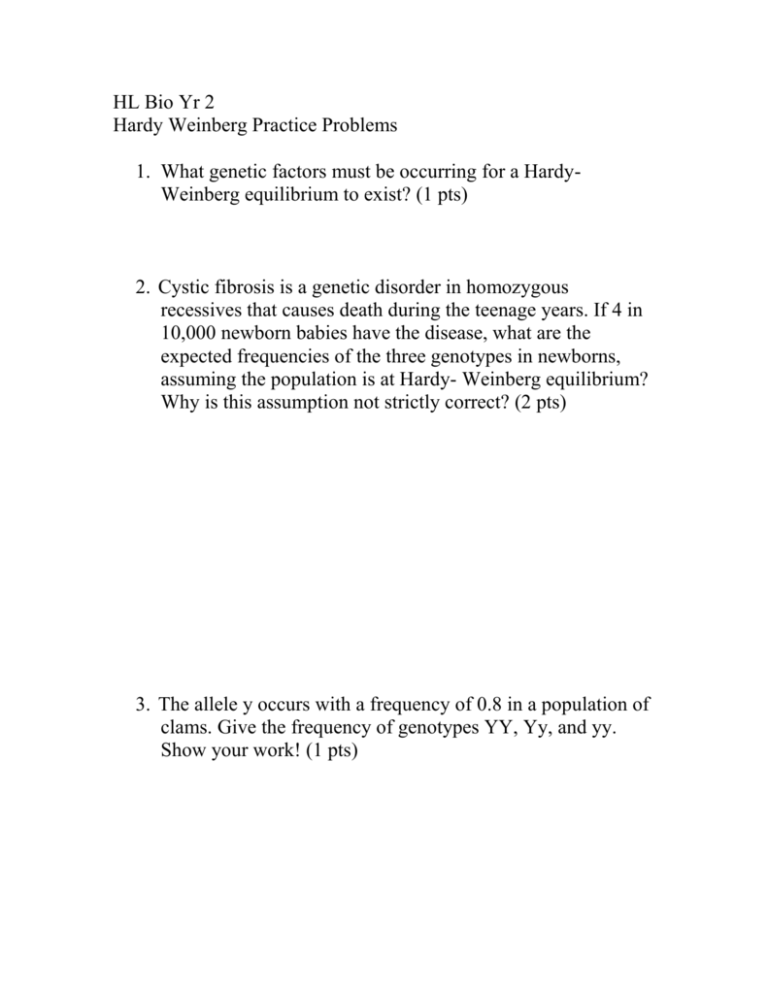
HL Bio Yr 2 Hardy Weinberg Practice Problems 1. What genetic factors must be occurring for a HardyWeinberg equilibrium to exist? (1 pts) 2. Cystic fibrosis is a genetic disorder in homozygous recessives that causes death during the teenage years. If 4 in 10,000 newborn babies have the disease, what are the expected frequencies of the three genotypes in newborns, assuming the population is at Hardy- Weinberg equilibrium? Why is this assumption not strictly correct? (2 pts) 3. The allele y occurs with a frequency of 0.8 in a population of clams. Give the frequency of genotypes YY, Yy, and yy. Show your work! (1 pts) 4. In the year 2374, humans finally developed the technology necessary for time travels. You are a scientist interested in the population genetics of extinct animals. Taking advantage of this technological advance, you decide to go to the past 8 million years to conduct a field work in Venezuela to study a population of Phoberomys pattersoni*, the world’s largest extinct rodent weighing approximately 700 kg (1500 lb) and looking vaguely like a giant guinea pig. The coat color of this rodent varies between tan (dominant) and brown (recessive). Assume the population is in Hardy-Weinberg equilibrium. You observed 336 tan Phoberomys and 64 brown Phoberomys during your study. (4 pts) a) What is the frequency of the homozygous recessive genotype? b) What is the allelic frequency of the dominant (tan) allele in the population? c) Of the animals you observed, how many were heterozygous? You make another trip to Venezuela and this time you observe 650 animals. d) How many of the 650 animals would you expect to be tan, assuming the population is still in Hardy-Weinberg equilibrium? e) How many of these tan animals are homozygous for the dominant allele?
